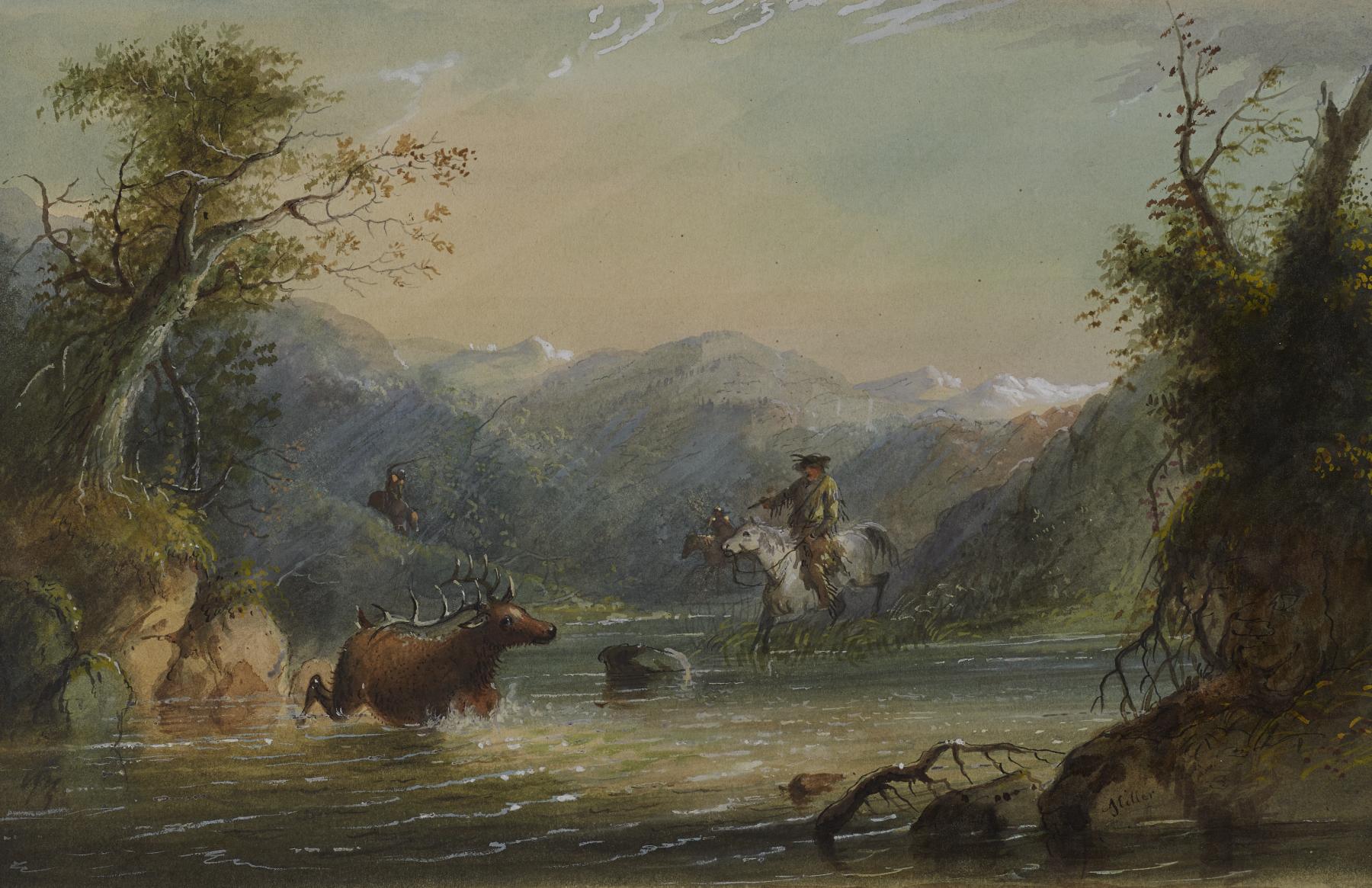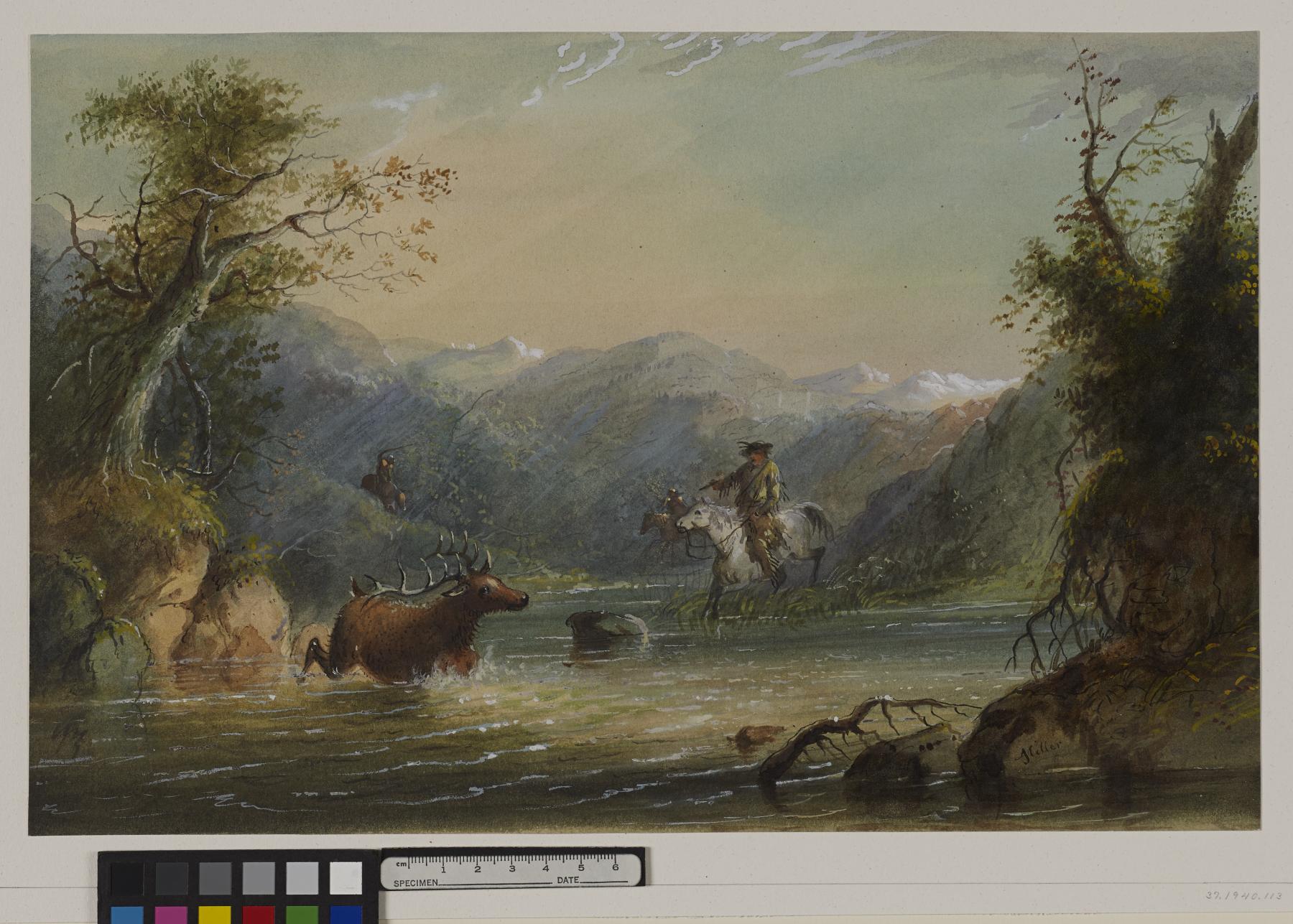Hunting the Elk
(18th and 19th Centuries )
Extracts from Alfred Jacob Miller’s original text, which accompanied his images of Native Americans, are included below for reference.
"Pressed by the hunters after a hard run, the Elk almost dead beaten has as a last resource leaped into a stream too shallow for him to swim, and this seals his fate;- the hunters evidently thinking that nothing but gunpowder will save their bacon. One is about to give him a Coup de Pistolet,- others are in the back ground, hurrying on with a ball in reserve if required. In comparison with the deer and antelope this animal is a little sluggish, but has a most noble presence, often carrying ten antlers on his head, and is extremely graceful. In size, about that of a large-sized mule. In winter they congregate in large herds numbering several hundreds, and travel immense distances. In season, the venison of the Elk, although coarser than the deer, is a capital addition to the larder." A.J. Miller, extracted from "The West of Alfred Jacob Miller" (1837).
In July 1858 William T. Walters commissioned 200 watercolors at twelve dollars apiece from Baltimore born artist Alfred Jacob Miller. These paintings were each accompanied by a descriptive text, and were delivered in installments over the next twenty-one months and ultimately were bound in three albums. Transcriptions of field-sketches drawn during the 1837 expedition that Miller had undertaken to the annual fur-trader's rendezvous in the Green River Valley (in what is now western Wyoming), these watercolors are a unique record of the closing years of the western fur trade.
Inscription
Provenance
Provenance (from the French provenir, 'to come from/forth') is the chronology of the ownership, custody, or location of a historical object. Learn more about provenance at the Walters.
William T. Walters, Baltimore, 1858-1860, by commission; Henry Walters, Baltimore, 1894, by inheritance; Walters Art Museum, 1931, by bequest.
Conservation
| Date | Description | Narrative |
|---|---|---|
| 4/1/1950 | Treatment | cleaned |
Geographies
USA (Place of Origin)
Measurements
H: 9 1/4 x W: 14 1/4 in. (23.5 x 36.2 cm)
Credit Line
Commissioned by William T. Walters, 1858-1860
Location in Museum
Not on view
Accession Number
In libraries, galleries, museums, and archives, an accession number is a unique identifier assigned to each object in the collection.
In libraries, galleries, museums, and archives, an accession number is a unique identifier assigned to each object in the collection.
37.1940.113







